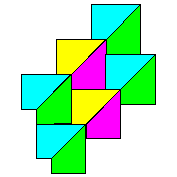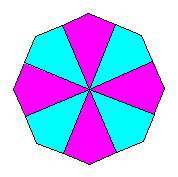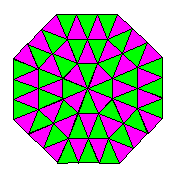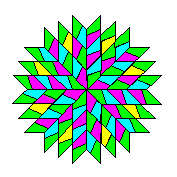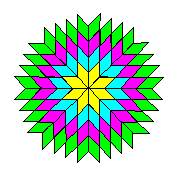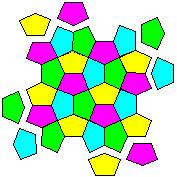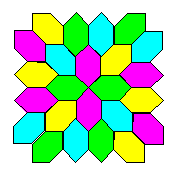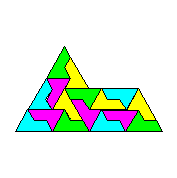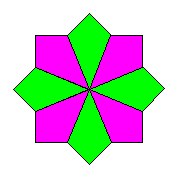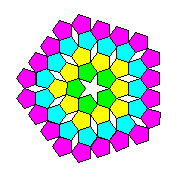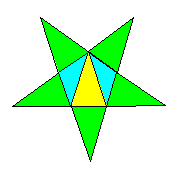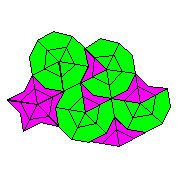| Origami
tiles are simple flat shapes that can be folded from
ordinary photocopy paper and then laid together to create
colourful tiling patterns. They are ideal for use in the
mathematics classroom or at mathematics clubs. Origami tiles can be used as
the basis for investigations of angle, shape and
symmetry. If they are unfolded back to their starting
shape the crease patterns can easily be used to work out
the angles (there is a worked example in the Trapezium
tiles pdf). In some cases these crease patterns also
reveal interesting relationships between the area or
perimeter of the tile and the area or perimeter of the
starting rectangle. Where I know of such a relationship I
have added notes to the diagrams.
I have used these
tiles in mathematics lessons with children ranging from 6
to 13 years of age and have found that children are
quickly engaged by the activity of folding a number of
tiles and working out the various ways in which they will
go together. If the tiling pattern is to be glued onto a
large sheet for display I would recommend getting each
child to write their name on the tile(s) they have folded
so that their contribution to the overall result is
clear.
Many of these tiles
are folded from 1:sqrt2 or silver rectangles. DIN paper
sizes such as A4 or A5 etc are good enough approximations
of this rectangle for classroom use. Since you can cut a
silver rectangle into two half size silver rectangles
they are easily scaled. DIN paper sizes are not easily
available, however, in all countries, so I have also
usually included a method of folding the same tile from
the square. Some can also be folded from US letter size
paper.
I have also
included a number of methods of folding tiles from
leftover rectangles, the 1:sqrt2+1 rectangle left over
when the largest possible square is removed from a silver
rectangle. This is partly because I often fold from
squares cut from A4 paper and so usually have a large
number of leftover rectangles lying around - and you may
too! - and partly because the methods are often either
extremely simple, mathematically interesting or both.
Origami tiles and
tiling patterns can be very simple or quite complex to
fold and lay together. In the details that follow the
simplest tiles are listed first ... and the most
difficult last.
|
